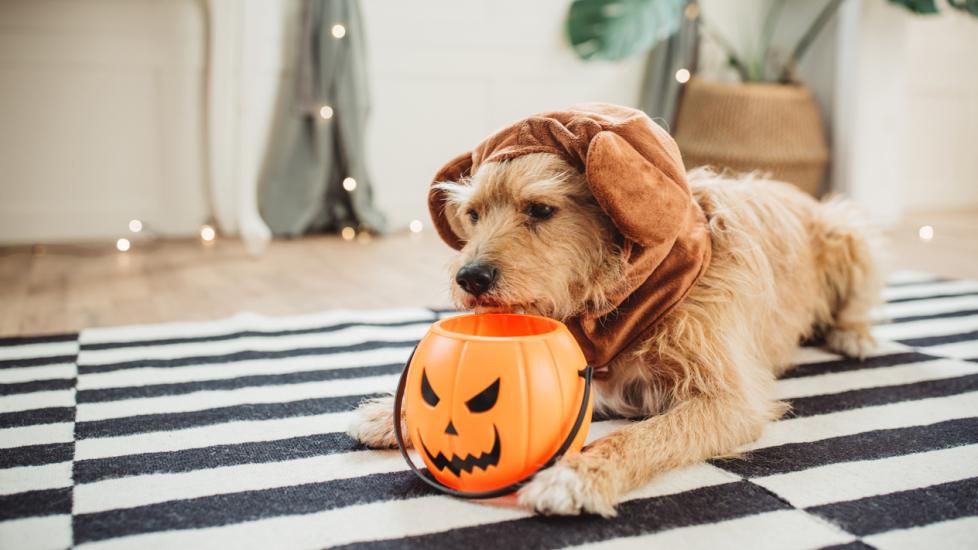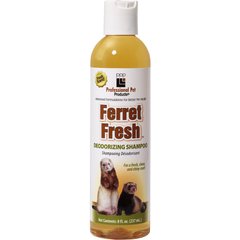8 Safety Considerations for Halloween Pet Costumes
iStock/svetikd
Halloween pet costumes are a fun and adorable way to celebrate the holiday. However, these costumes can come with some risks, so read on to find out how to prevent any health issues or injuries while your pet is out trick or treating or celebrating at home.
Proper Fit of Costume
A very common problem with pet costumes is that they are often sold as “one size fits most,” and they only come as small, medium, and large breed options. A teacup poodle is certainly just as much a small breed as a Lhasa apso, but the body proportions and sizes are very different, and a small-breed costume is most likely not going to fit both dogs safely.
Be sure to measure your pet and compare it to the measurements of the costume before settling on a final outfit. If a costume is too big, it might trip your pet, leading to an injury. If it is too small, it could squeeze your pet, limit her ability to breathe normally, cause rub sores, and generally be uncomfortable.
Once the costume is on, be sure to closely watch the body language of your animal. If it acts uncomfortable or frightened, take the costume off and consider a stylish alternative like a spooky bandana, appropriate bow tie, or something else to show off the season without adding stress to your pet.
Recommended Products
Ensure Full Mobility
Not only should the costume fit well and be comfortable, but it should also allow your pet to perform all its normal motions. It needs to be able to see, hear, bark, walk, run, and move about just as always. If the costume includes a mask or shoes, these are best used for short-term “photo ops” and not for general wear.
One way to make certain your pet can get around comfortably for the big night is to do a test run with the costume a few weeks beforehand. This gives you plenty of time to either adjust the costume, look for another one, or change to something less restrictive. If you aren’t sure, do several trials with your adjustments leading up to Halloween.
Ensure Vision Isn't Limited
Any costume that covers the face may block the vision or hearing of your pet. Watch carefully to be sure that the costume doesn’t droop over the eyes, making it hard for your pet to see where it is going. This could lead to a fall and a potential injury, especially if your dog will be trick or treating in an unfamiliar place.
Additionally, pets are more likely to be frightened or stressed if they don’t feel like they have all their senses, especially at night. Remember that there may be other people or dogs in costume, which might be a scary experience for your pet! When in doubt, leave off any obstructing portions of the costume.
Possible Allergic Reactions
Although not common, animals can have allergic reactions to fabrics and detergents, just like people. Another reason a trial run can be helpful with your pet is to identify any itching, rashes, or respiratory problems the costume might cause. If you notice any changes that are concerning, remove the costume right away, and bathe your pet in a gentle shampoo like Dawn dish soap. If problematic signs persist, call your veterinarian.
Ensure No Hazardous Choking Items
Most costume manufacturers design the costume with the pet parents in mind and not necessarily the safety of the animal. Many costumes have accessories that are loose or can easily be chewed, and these can be swallowed and cause a choking hazard or a gastrointestinal blockage.
Check the costume carefully before ever trying it on your pet and look for any dangling or loosely attached items that could be pulled off or chewed on. Smaller items such as hats or shoes might even be eaten whole. If possible, remove any pieces that could present a danger to your pet, adjust the costume to be worn safely, or decide on a different outfit that is safe for your animal.
Monitor Pet in Costume
Costumes should be considered a “supervised only” toy. No animal should ever be left alone while in costume because even with a relatively safe outfit, there is always an increased risk of injury. Always leave a responsible adult in charge of the leash so that the pet is appropriately supervised.
If there are other animals around, keep in mind that pets use body language as a form of communication, and there will be a change in the signals given off by any pets in costume. This could lead to a conflict, even between dogs that were previously friendly. Always have your pet on a leash when multiple dogs are around and in costume for safety’s sake.
Recognize Signs of Stress
Just like not all people enjoy getting dressed up to go out, not all pets enjoy getting dressed up either. Most cats will offer their opinions of a costume freely. Dogs might be a little more “go along to get along,” but if your dog has folded down ears or eyes looking sideways or rolling back, or it starts slinking around with a tucked tail or hunched spine, the pet probably isn’t having as much fun with the costume as you are. This isn’t a time for tough love, and if it’s clear your pet doesn’t like the costume or is not comfortable in it, take the hint and remove the outfit.
Ensure ID Tags are Visible
Since Halloween is all about spooky, your pet might see something that startles it, causing it to run away. Should this happen, it is most likely that your pet will be returned to you quickly if its wearing a collar with clearly visible ID tags and a microchip with current contact information. Also keep in mind that many states require that your dog display a rabies tag on its collar at all times, which is additionally wise if your dog will be meeting new people and animals.
Getting dressed up for Halloween can be fun for humans and animals alike. However, it is very important to make sure that the costume you choose for your pet is safe, comfortable, and well tolerated before the festivities. With some preparation and attention to detail, both you and your pet can dress your best for Halloween!




